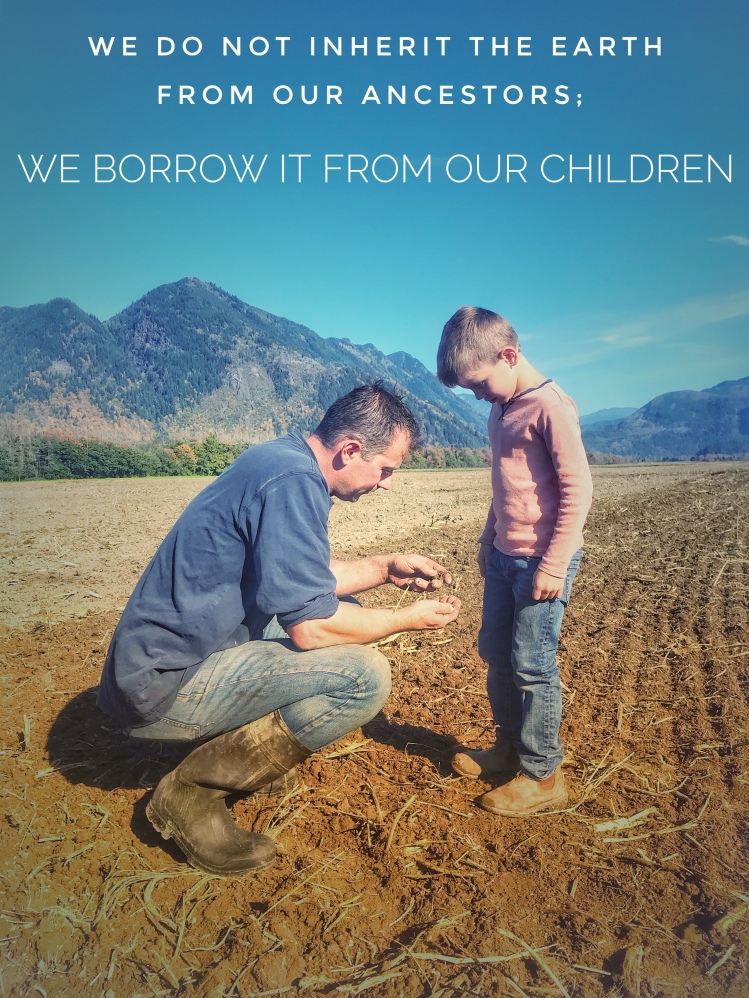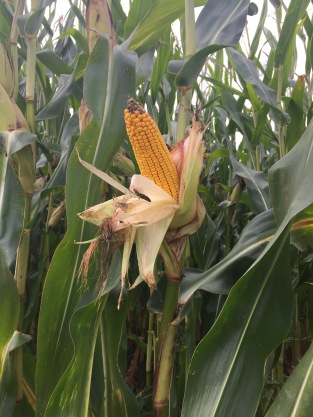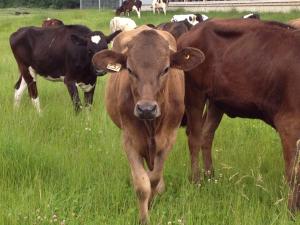I’m an organic dairy farmer, and this question–Is organic farming anti-science–has been weighing on my mind recently. Said another way, many people question whether organic farming is as advanced as conventional farming. This is an issue close to my heart as I’m a former conventional farmer.
Speaking for myself, and I believe for all the organic farmers who I know, I’m constantly on the lookout to improve our operation with new or improved farming techniques, often spending time online and on social media researching different methods of agriculture and interacting with and learning from other farmers and farming organizations, and not just those that support organic farming.
For the past several months, especially since I have become more active on social media, I have read multiple assumptions that purport to show that farming organically means that scientific knowledge and research is thrown out the window. I’ve also heard opinions that organic farming is not as innovative, efficient, or sustainable as conventional farming. In addition to this, I have seen consumers that choose organic products ridiculed as uninformed and unrealistic for buying into the latest scam or “woo” put forward by organic farmers and “Big Organic” and, subsequently, supermarkets’ motives are questioned when they source foods (supposedly) produced in a manner not supported by scientific research to supply these consumers.

Some recent examples
Now, as an organic farmer, allow me to try to explain why I believe that these assumptions are neither accurate nor warranted. Here’s why:
When I take stock of our farm practices on our transitional organic dairy farm, I find that I can say with emphasis that I firmly believe that organic farming is just as science based and as innovative as conventional farming, especially in these three areas: sustainability, animal welfare, and technology. *Disclaimer: this is not an in-depth look at organic versus conventional farming, but rather a short, superficial analysis of how organic farming also utilizes science and technology. Technology and Scientific Research: Organic farms utilize much of the same technology that conventional farmers employ. Precision cropping equipment and high tech field mapping in crops are used by conventional and organic farmers alike. Sometimes, organic farmers use different, but still advanced, technology, such as the new piece of equipment I came across recently that selectively weeds cereal crops. When it comes to dairy, my niche, I know that robotic milkers can be found on conventional and organic operations. Organic dairy farmers utilize the same milk testing regimen as conventional dairymen, and therefore know just as much about each cow’s production, milk quality, and milk components as their conventional neighbor down the road. Organic and conventional farmers have access to the same breeding technology, and use the same bull proof sheets and information when finding an appropriate sire(s) for their herd. Similarly, crops fed to cows on organic farms are tested for nutritional value and the herd’s diet is balanced by a specialized nutritionist, just as is done on conventional dairies. On our farm, we have participated in scientific studies looking at different types of manure application methods and their impact on soil and crops. Being organic does not exempt us from trying to farm the best we possibly can by applying scientific research results to our operations. The one major difference in technology usage is the exemption of GM crops in organic farming. I’ll leave it up to you to decide whether or not that is a positive or negative aspect of organics. 🙂

New breeding bulls for our farm. We selected these bulls partly because their genetic background looks promising.
Sustainability: Both conventional and organic farmers try to ensure that their farm is sustainable. This can be done conventionally by using environmentally beneficial practices, such as no till cropping and cover crops. No or low till crops protect the soil from erosion and drought and also allow the farmer to grow crops with less passes of heavy machinery that burn fossil fuels. Organic farming practices revolve around improving and feeding the soil and soil life rather than feeding the crop growing in that soil. Organic farmers believe that healthy, balanced soil full of organic matter and nutrients will grow good crops. This has proved to be true on our farm. Since we began farming organically three years ago (without the use of any pesticides), we have not noticed the slightest decrease in our crop yields. By utilizing natural fertilizers such as compost, animal manure and green manure crops, organic farming reduces its carbon footprint by not relying on synthetic chemical fertilizers, manufactured with fossil fuels. Both organic and conventional farms in Canada take advantage of Canada’s Environmental Farm Plan to certify that they utilize environmentally sound and beneficial practices. Also, many farms of each variety across Canada employ the use of Nutrient Management Plans, which, through soil and input tests, help a farmer make informed choices of how to best supply nutrients to their land and crops.

Our grass, cut and harvested as silage for winter feeding, is grown without the use of chemical fertilizers. We use animal manures and compost to fertilize our grass and corn crops.
Animal Welfare: As a former conventional farmer myself, I know that conventional farmers do their best to ensure that their animals are well cared for. All farmers know that animals that are cared for well will be more profitable, but beyond this, farmers provide the best care possible for the animals under their care simply because it is the right thing to do. In dairy, Canada’s proAction plan involves an animal welfare component, one that has been praised by animal welfare groups as being the best of its kind in the world. However, organic practices in livestock raising and housing go above and beyond this Code of Practice. For example, the Canadian Organic Standards have stricter animal stocking regulations and calf housing requirements. Animals on organic dairy farms must have access to the outdoors. For cows, this has been scientifically proven by animal researchers to result in better hoof health than being confined to the traditional concrete floored barns. Nutritionally, for cows, their diet is limited to a certain percentage of grain, which in turn limits the amount of milk a cow will produce, but, can, as we have noticed on our farm, result in a healthier cow with increased longevity and decreased vet visits and associated costs. Along with conventional farms in our area, we have participated in university studies surrounding the care and housing of dairy calves. We have responded to this research by adjusting our calf rearing habits to mirror the latest research-supported trends in dairy cattle care. Again, being organic does not mean that we ignore the scientific evidence presented by researchers that point to the best way to care for our animals, but rather that we adopt these changes, just as conventional farmers do.

Our cows on pasture last week. Cows enjoy grazing and relaxing outdoors, as can be seen in the way they eagerly rush out the barn door each morning.

Discussing calf care with researchers from the University of British Columbia.
Looking over the above paragraphs, it can be noticed that while some practices are different, both conventional and organic farmers have their farm’s best interest in mind. We may have slightly different goals and different methods of achieving these goals, but that does not mean that either way of farming is wrong, unscientific or less innovative . It simply means that we are different. This is why I’ve found the recent interactions that seem to point to an “us versus them” mindset to be so troubling. There is no need for any farmer to disparage a type of farming different from their own. Instead, farmers would do well to explain their own farming practices: what you do and why you do it, instead of attacking another’s ideas and way of life. When confronted with questions about what you do and why you do it, please try to explain your reasoning without deliberately diminishing another. I am of the opinion that when we rely on hearsay to form our opinions and then allow our stance on either type of farming to harden into ideological absolutes, we run the risk of losing the opportunity for discussion, balance and learning from one another. I personally believe that organic farming is here to stay, and I believe that we’ll see conventional farmers adopting organic principles, and vice versa. And this is a good thing: farmers working together to improve the entire agriculture industry. Together, we can achieve great things and combine forces to feed the population that relies on us for sustenance. There can scarcely be a more honorable occupation, and so, let us do our best to go about our daily lives with a willingness to support all farmers, regardless of practices employed.
(Please don’t feel that this is a rant against one specific group or individual; I’ve found this mind-set to be getting more and more common and pervasive and I have spent several weeks trying to find the words to express my feelings about this. If you follow me on social media, you’ll know that I have also spoken out about organic groups shaming conventional farmers and their practices. I think it’s only fair to do the same now that the shoe is on the other foot. Comments are always welcomed, but please be respectful.)






































